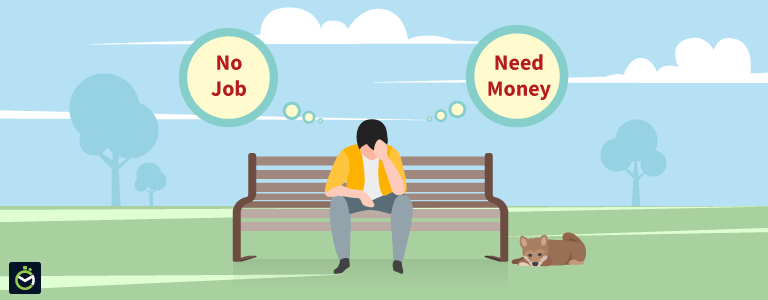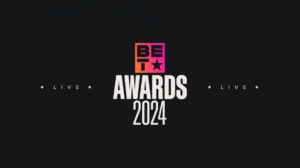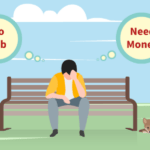In an ideal world, you’d be lounging on a tropical beach, sipping a piña colada, and your bank account would be magically refilling itself. But, in reality, we have bills to pay, groceries to buy and an ever-present need for financial stability.
But what happens if you find yourself in a tight spot without a job? Can you get a loan without a job? Surprisingly, the answer is yes, and it’s more common than you might think.
The Reality of Loans Without a Job
The idea of securing a loan without a job might seem like trying to ride a bike through a tornado—challenging but not impossible. Financial institutions typically prefer borrowers with a steady income to ensure they can repay the loan. However, several lenders understand that life isn’t always predictable, and sometimes, people need a little financial help even without traditional employment.
How Can You Get a Loan Without a Job?
The key to securing a loan without a job lies in proving your ability to repay it. Lenders need assurance that you have a source of income or assets to cover the loan payments. Here are some strategies you can use:
1. Show Alternative Income Sources: If you have income from sources other than a traditional job, such as freelance work, rental income, investments, or government benefits, you can use this to your advantage. Lenders will consider these when evaluating your loan application.
2. Use a Co-Signer: A co-signer with a steady income can significantly improve your chances of getting a loan. This person agrees to take responsibility for the loan if you default, giving the lender extra security.
3. Provide Collateral: Secured loans require collateral, such as a car or property, which can increase your chances of approval. If you default, the lender can seize the collateral to recover their money.
4. Demonstrate a Good Credit History: A strong credit history shows lenders that you are responsible with credit and can repay loans, even if you don’t have a job. Keep your credit score high by paying bills on time and managing debt responsibly.
5. Apply for a Personal Loan: Some lenders specialize in personal loans for individuals without traditional employment. These loans often have higher interest rates and stricter terms but can be a viable option if you need funds urgently.
Loans With No Job: The Lender’s Perspective
From a lender’s point of view, giving loans to people without a job is a riskier proposition. Lenders need to mitigate this risk by carefully evaluating the applicant’s overall financial situation. They will look at factors such as:
Income Sources: As mentioned, alternative income sources can reassure lenders about your repayment ability.
Credit History: A solid credit history can speak volumes about your reliability and financial management skills.
Collateral: Offering collateral can be a deal-maker as it provides a safety net for the lender.
Debt-to-Income Ratio: Lenders will assess your current debts compared to your income. A lower ratio suggests you have more disposable income to cover loan payments.
Loan Amount: Smaller loan amounts might be easier to secure as they present a lower risk for the lender.
How to Get a Loan Without a Job
Applying for a loan without a job involves several steps. Here’s a roadmap to guide you through the process:
Step 1: Assess Your Financial Situation
Before applying for a loan, take a close look at your finances. Determine your monthly income, expenses, and existing debts. This assessment will help you understand how much you can realistically afford to borrow and repay.
Step 2: Research Lenders
Not all lenders are created equal, especially when it comes to offering loans to individuals without a job. Look for lenders who specialize in personal loans or those known for their flexibility in considering alternative income sources.
Step 3: Gather Documentation
Prepare documentation that supports your loan application. This may include bank statements, tax returns, proof of income (such as freelance contracts or rental agreements), and information about any collateral you can offer.
Step 4: Consider a Co-Signer
If you have a trusted friend or family member with a steady income, consider asking them to co-sign the loan. Ensure they understand the responsibilities and risks involved.
Step 5: Apply for the Loan
Submit your application to your chosen lender, ensuring all documentation is complete and accurate. Be prepared to discuss your financial situation and how you plan to repay the loan.
Step 6: Review Loan Offers
If you receive multiple loan offers, compare the terms carefully. Pay attention to the interest rate, repayment terms, fees, and any other conditions.
Step 7: Accept the Loan
Once you’ve selected the best loan offer, accept it and review the agreement thoroughly before signing. Ensure you understand the repayment schedule and any penalties for late payments.
The Risks and Rewards of Loans Without a Job
Securing a loan without a job can be a double-edged sword. While it can provide much-needed financial relief, it also comes with risks.
Rewards:
1. Immediate Financial Relief: A loan can help cover essential expenses, pay off high-interest debt, or fund urgent needs.
2. Building Credit: Successfully repaying a loan can boost your credit score, making it easier to secure future credit.
3. Opportunity for Growth: A loan can provide the capital needed to start a business or invest in opportunities that could improve your financial situation.
Risks:
1. High Interest Rates: Loans without a job often come with higher interest rates, increasing the overall cost of borrowing.
2. Stricter Terms: Lenders may impose stricter terms, such as shorter repayment periods or higher fees.
3. Risk of Default: Without a steady income, the risk of defaulting on the loan is higher, which can damage your credit score and lead to the loss of collateral.
Alternatives to Traditional Loans
If you’re struggling to get a traditional loan without a job, consider these alternatives:
1. Personal Loans from Friends or Family: Borrowing from friends or family can be a less formal and potentially lower-cost option. Be sure to set clear terms and repay the loan to avoid damaging relationships.
2. Peer-to-Peer Lending: Online platforms connect borrowers with individual lenders willing to provide personal loans. These platforms often consider alternative income sources and credit histories.
3. Credit Unions: Credit unions are member-owned financial institutions that may offer more flexible lending criteria and lower interest rates compared to traditional banks.
4. Government Assistance: Explore government programs designed to provide financial assistance to individuals in need. These programs may offer grants, low-interest loans, or other forms of support.
Real-Life Stories: Getting a Loan Without a Job
Sarah’s Story:
Sarah, a freelance graphic designer, found herself in a tight spot when her laptop broke down. Without a job in the traditional sense, she wondered, “Can you get a loan without a job?” She provided her bank with proof of her freelance income and a strong credit history. The bank approved her loan, allowing her to buy a new laptop and continue her work.
Tom’s Story:
Tom, recently laid off, needed funds to cover medical expenses. He offered his car as collateral and applied for a secured loan. The lender approved his application, giving him the financial relief he needed during a challenging time.
Exploring the Financial Waters Without a Job
In today’s gig economy, traditional employment is no longer the only way to secure financial stability. While getting a loan without a job is more challenging, it’s certainly possible with the right approach and preparation.
Remember, the key to success is demonstrating your ability to repay the loan, whether through alternative income sources, collateral, or a strong credit history. By understanding your options and taking proactive steps, you can navigate the financial waters and secure the funds you need, even without a traditional job.
Also read:
FAQs About Getting a Loan Without a Job
How can you get a loan without a job?
You can get a loan without a job by demonstrating alternative income sources, using a co-signer, providing collateral, or showcasing a strong credit history. Lenders need assurance that you can repay the loan through means other than traditional employment.
Where can you get a loan without a job?
You can get a loan without a job from various sources, including banks, credit unions, online lenders, and peer-to-peer lending platforms. Look for lenders who are flexible in considering alternative income sources.
Is it risky to get a loan without a job?
Yes, getting a loan without a job can be risky due to higher interest rates, stricter terms, and the potential for default. It’s essential to carefully assess your financial situation and ability to repay the loan before applying.
What alternatives exist if I can’t get a traditional loan without a job?
Alternatives include borrowing from friends or family, peer-to-peer lending, credit unions, and government assistance programs. These options may offer more flexible terms and lower costs.
Can a good credit history help in getting a loan without a job?
Yes, a strong credit history can significantly improve your chances of getting a loan without a job. It demonstrates your reliability in managing credit and repaying debts, making lenders more likely to approve your application.
What should I consider before applying for a loan without a job?
Before applying, assess your financial situation, research lenders, gather necessary documentation, consider a co-signer, and compare loan offers. Ensure you understand the terms, interest rates, and repayment schedule to make an informed decision.





















